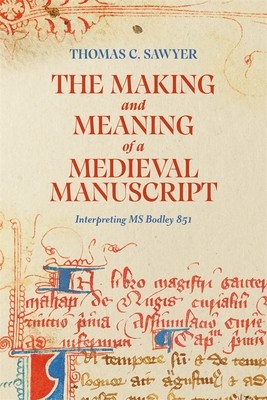
- We will send in 10–14 business days.
- Author: Thomas C Sawyer
- Publisher: Boydell & Brewer
- ISBN-10: 1843847469
- ISBN-13: 9781843847465
- Format: 15.6 x 23.4 x 1.4 cm, kieti viršeliai
- Language: English
- SAVE -10% with code: EXTRA
Reviews
Description
Develops a method for placing book-historical evidence in dialogue with literary meaning through a detailed investigation of a MS Bodley 851.
How do you read a medieval book? And what is the relationship between the study of manuscripts as material artifacts and the study of their textual contents? This book develops a method for placing book-historical evidence in dialogue with literary meaning. Medieval manuscripts do not simply witness the texts they contain: through the process of their making, they preserve and generate knowledge about literature itself. Central to the expression of method in this study is a detailed investigation of an immensely complex composite manuscript, Oxford, Bodleian Library MS Bodley 851. This manuscript survives as an important representative of textual cultures popular in late-medieval England: it attests the work of at least eight scribal agents and contains an infamous scribal version of Piers Plowman (Z-text), the sole surviving copy of Walter Map's De nugis curialium, and an array of satirical Anglo-Latin poetry, including the Apocalypsis goliae episcopi, the Speculum stultorum, and the Bridlington Prophecy. Close attention to the production of Bodley 851 underpins critical examinations of fragmentary misogamy, the construction of literary sequences, and the extent of pseudonymous authorship in the manuscript record.EXTRA 10 % discount with code: EXTRA
The promotion ends in 23d.20:03:27
The discount code is valid when purchasing from 10 €. Discounts do not stack.
- Author: Thomas C Sawyer
- Publisher: Boydell & Brewer
- ISBN-10: 1843847469
- ISBN-13: 9781843847465
- Format: 15.6 x 23.4 x 1.4 cm, kieti viršeliai
- Language: English English
Develops a method for placing book-historical evidence in dialogue with literary meaning through a detailed investigation of a MS Bodley 851.
How do you read a medieval book? And what is the relationship between the study of manuscripts as material artifacts and the study of their textual contents? This book develops a method for placing book-historical evidence in dialogue with literary meaning. Medieval manuscripts do not simply witness the texts they contain: through the process of their making, they preserve and generate knowledge about literature itself. Central to the expression of method in this study is a detailed investigation of an immensely complex composite manuscript, Oxford, Bodleian Library MS Bodley 851. This manuscript survives as an important representative of textual cultures popular in late-medieval England: it attests the work of at least eight scribal agents and contains an infamous scribal version of Piers Plowman (Z-text), the sole surviving copy of Walter Map's De nugis curialium, and an array of satirical Anglo-Latin poetry, including the Apocalypsis goliae episcopi, the Speculum stultorum, and the Bridlington Prophecy. Close attention to the production of Bodley 851 underpins critical examinations of fragmentary misogamy, the construction of literary sequences, and the extent of pseudonymous authorship in the manuscript record.

Reviews